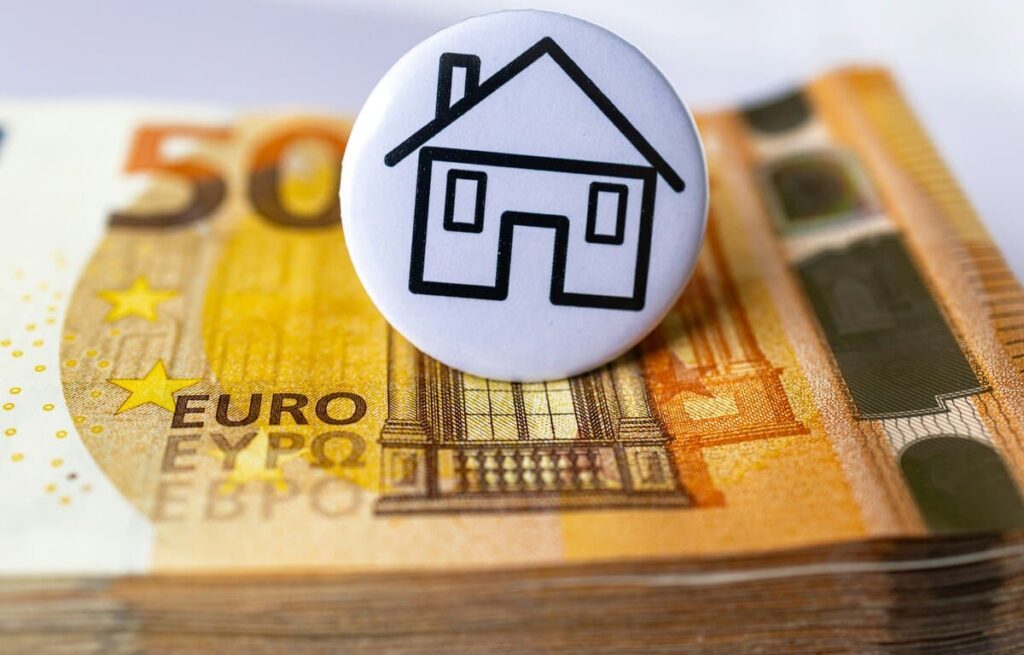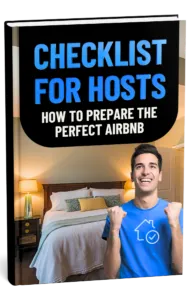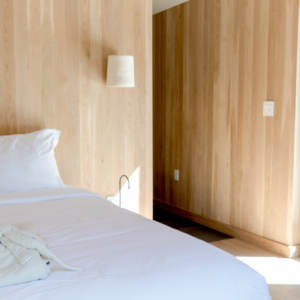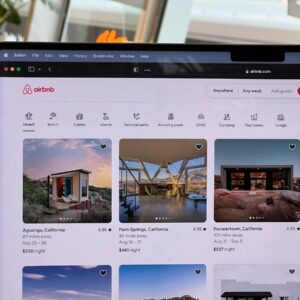Unlocking Profit Potential: The Ultimate Guide to Dynamic Pricing for Airbnb Hosts

In the bustling world of Airbnb hosting, maximizing profit isn’t just about filling your calendar. It’s about strategically setting the right price at the right time. Enter dynamic pricing for Airbnb, a powerful tool that allows you to adapt your rates based on market demand, local events, and seasonal trends.
Imagine transforming your property into a magnet for bookings by simply adjusting your pricing strategy! This ultimate guide dives deep into dynamic pricing for Airbnb hosts, unveiling the secrets to unlocking your profit potential. From understanding the fundamentals to examining effective pricing models, you’ll gain the insights needed to stay competitive in this fast-paced market.
Whether you’re a seasoned host or just starting, this guide will equip you with actionable strategies to elevate your earnings and ensure your listing stands out among the crowd. Get ready to turn your Airbnb into a thriving business with the power of dynamic pricing for Airbnb at your fingertips!
Understanding Dynamic Pricing for Airbnb: What Every Host Should Know

Dynamic pricing for Airbnb, also known as demand pricing or time-based pricing, is a flexible pricing strategy where prices are adjusted in real-time based on market demand, supply, and other external factors.
For Airbnb hosts, this means that the price of a listing can fluctuate daily, or even hourly, in response to changing market conditions. Understanding the basics of dynamic pricing is crucial for any host looking to maximize their revenue and occupancy rates.
The concept is not new; it has been widely used in industries such as airlines, hotels, and ride-sharing services. These industries have successfully leveraged dynamic pricing to optimize their revenue by charging higher prices during peak demand periods and offering discounts during off-peak times. For Airbnb hosts, adopting a similar approach can lead to increased bookings and higher overall earnings.
Implementing dynamic pricing for Airbnb requires a keen understanding of various factors that influence pricing decisions. These include local events, seasonal trends, competitor rates, and market demand. By continuously monitoring these factors and adjusting prices accordingly, hosts can ensure that their listings remain competitive and attractive to potential guests. The key is to strike the right balance between maximizing revenue and maintaining a high occupancy rate.
The Importance of Dynamic Pricing for Maximizing Revenue
Maximizing revenue is the ultimate goal for any host, and dynamic pricing for Airbnb is a powerful tool to achieve this. By adjusting prices based on real-time market conditions, hosts can capitalize on periods of high demand and avoid leaving money on the table. For instance, during a major local event or holiday season, increasing prices can lead to higher earnings, while offering discounts during slower periods can help attract more bookings.
One of the main advantages of dynamic pricing for Airbnb is its ability to respond to market fluctuations quickly. Traditional fixed pricing models do not account for changes in demand, which can result in missed opportunities for higher revenue. Dynamic pricing, on the other hand, allows hosts to adjust their rates in real-time, ensuring that they are always in line with current market conditions. This flexibility can lead to significant revenue gains over time.
In addition to maximizing revenue, dynamic pricing can also help improve occupancy rates. By offering competitive prices during off-peak periods, hosts can attract more guests and maintain a steady stream of bookings. This not only increases revenue but also enhances the overall guest experience by ensuring that the property is consistently occupied and well-maintained. Ultimately, dynamic pricing enables hosts to optimize their earnings while providing a valuable service to their guests.
Key Factors Influencing Dynamic Pricing in the Airbnb Market
Several key factors influence dynamic pricing in the Airbnb market, and understanding these factors is essential for hosts looking to implement an effective pricing strategy.
One of the most important factors is market demand. This includes the overall demand for short-term rentals in a particular area, as well as the demand for specific types of properties. By keeping an eye on market trends and adjusting prices accordingly, hosts can ensure that their listings are always competitively priced.
Local events and seasonal trends also play a significant role in dynamic pricing. Major events such as festivals, conferences, and sporting events can lead to a surge in demand for short-term rentals, allowing hosts to increase their prices. Similarly, seasonal trends such as holidays and vacation periods can also impact demand. By anticipating these trends and adjusting prices in advance, hosts can maximize their revenue during peak periods.
Competitor pricing is another important factor to consider. By monitoring the prices of similar listings in the area, hosts can ensure that their rates are competitive. This can be done manually or through the use of pricing tools and software that provide real-time data on competitor rates. By staying in line with market prices, hosts can attract more bookings and avoid pricing themselves out of the market.
How to Set Up Dynamic Pricing for Your Airbnb Listing
Setting up dynamic pricing for your Airbnb listing involves several steps, and the first step is to gather data on market trends and competitor pricing. This can be done manually by researching similar listings in your area and monitoring their prices over time.
Alternatively, you can use pricing tools and software that provide real-time data on market trends and competitor rates. These tools can save you time and provide valuable insights into pricing strategies.
Once you have gathered the necessary data, the next step is to determine your pricing strategy. This involves setting a base price for your listing, as well as establishing minimum and maximum prices. Your base price should reflect the average rate for similar properties in your area, while your minimum and maximum prices should account for periods of low and high demand. By setting these parameters, you can ensure that your prices remain competitive and flexible.
The final step is to implement your pricing strategy using Airbnb’s dynamic pricing tools or third-party software. Airbnb offers its own dynamic pricing tool called Smart Pricing, which automatically adjusts your rates based on market demand and other factors.
Alternatively, you can use third-party software that provides more advanced pricing algorithms and customization options. Whichever option you choose, the key is to continuously monitor and adjust your prices to ensure that they remain competitive and aligned with market conditions.
Tools and Software for Implementing Dynamic Pricing Strategies
There are several tools and software available for implementing dynamic pricing strategies, each with its own features and benefits. One of the most popular options is Airbnb’s Smart Pricing tool, which automatically adjusts your rates based on market demand, local events, and other factors. This tool is easy to use and can help you optimize your pricing strategy with minimal effort.
In addition to Airbnb’s Smart Pricing, there are several third-party software options that offer more advanced pricing algorithms and customization options. Some of the most popular options include Beyond Pricing, PriceLabs, and Wheelhouse. These tools provide real-time data on market trends and competitor rates, allowing you to make informed pricing decisions. They also offer features such as automated pricing adjustments, revenue management dashboards, and performance analytics.
When choosing a pricing tool or software, it’s important to consider your specific needs and preferences. Some hosts may prefer the simplicity and ease of use of Airbnb’s Smart Pricing, while others may benefit from the advanced features and customization options offered by third-party software. Ultimately, the key is to choose a tool that aligns with your pricing strategy and helps you achieve your revenue goals.
Analyzing Market Trends: When to Adjust Your Pricing
Analyzing market trends is a crucial aspect of dynamic pricing for airbnb, and knowing when to adjust your prices can make a significant difference in your revenue.
Market trends can be influenced by various factors, including local events, seasonal changes, and shifts in demand. By keeping a close eye on these trends, you can make timely pricing adjustments that align with market conditions.
Local events such as festivals, conferences, and sporting events can lead to a surge in demand for short-term rentals. By monitoring event calendars and anticipating these periods of high demand, you can increase your prices in advance and capitalize on the influx of visitors. Similarly, during off-peak periods when demand is lower, offering discounts can help attract more bookings and maintain a steady stream of guests.
Seasonal trends also play a significant role in dynamic pricing. For example, holiday seasons and vacation periods often see an increase in demand for short-term rentals. By adjusting your prices to reflect these seasonal trends, you can maximize your revenue during peak periods. Additionally, it’s important to consider factors such as weather conditions and travel patterns, as these can also impact demand and pricing decisions.
Common Mistakes to Avoid with Dynamic Pricing
While dynamic pricing for Airbnb can be a powerful tool for maximizing revenue, there are several common mistakes that hosts should avoid. One of the most common mistakes is failing to monitor and adjust prices regularly.
Dynamic pricing requires continuous monitoring and adjustments to ensure that your rates remain competitive and aligned with market conditions. Failing to do so can result in missed opportunities for higher revenue and lower occupancy rates.
Another common mistake is setting prices too high or too low. Setting prices too high can deter potential guests and result in lower occupancy rates, while setting prices too low can leave money on the table. It’s important to strike the right balance by setting competitive prices that reflect market demand and ensure a steady stream of bookings. Using pricing tools and software can help you achieve this balance by providing real-time data and insights into market trends.
Additionally, some hosts may overlook the importance of local events and seasonal trends when setting prices. Failing to account for these factors can result in missed opportunities for higher revenue during periods of high demand.
By staying informed about local events and seasonal trends, you can make timely pricing adjustments that maximize your earnings. Ultimately, the key to successful dynamic pricing is continuous monitoring, informed decision-making, and a flexible pricing strategy.
Real-Life Success Stories: Hosts Who Thrived with Dynamic Pricing
Many Airbnb hosts have successfully implemented dynamic pricing strategies to maximize their revenue and improve their occupancy rates. One such host is Sarah, who owns a beachfront property in a popular tourist destination.
By using a third-party pricing tool, Sarah was able to monitor market trends and adjust her prices in real-time. This allowed her to capitalize on periods of high demand, such as holiday seasons and local events, leading to a significant increase in her earnings.
Another success story is John, who owns a cozy cabin in a mountainous region. John initially struggled with low occupancy rates during off-peak periods, but after implementing a dynamic pricing strategy, he saw a noticeable improvement. By offering competitive prices during slower periods and increasing rates during peak seasons, John was able to attract more guests and maintain a steady stream of bookings. This not only increased his revenue but also enhanced the overall guest experience.
Lastly, there’s Maria, who owns a chic apartment in a bustling city. Maria used Airbnb’s Smart Pricing tool to automatically adjust her rates based on market demand and local events. This tool saved her time and ensured that her prices were always competitive. As a result, Maria saw a significant boost in her revenue and occupancy rates. These success stories highlight the potential of dynamic pricing to transform your Airbnb business and unlock your profit potential.
Future Trends in Dynamic Pricing for Short-Term Rentals
The future of dynamic pricing for short-term rentals looks promising, with several emerging trends set to shape the industry. One of the key trends is the increasing use of artificial intelligence (AI) and machine learning algorithms to optimize pricing strategies. These technologies can analyze vast amounts of data in real-time, providing hosts with more accurate and actionable insights into market trends and demand patterns.
Another emerging trend is the integration of dynamic pricing with other aspects of revenue management, such as marketing and distribution. By leveraging data from multiple sources, hosts can develop more comprehensive and effective pricing strategies that maximize revenue across all channels. This holistic approach to revenue management is expected to become increasingly important in the highly competitive short-term rental market.
Additionally, there is a growing emphasis on personalized pricing strategies that cater to the unique preferences and behaviors of individual guests. By using data analytics and customer segmentation, hosts can tailor their pricing and promotional strategies to specific guest segments, enhancing the overall guest experience and driving higher revenue. The future of dynamic pricing for short-term rentals is set to be driven by advanced technologies, data-driven insights, and personalized strategies.
Conclusion: Taking Action to Boost Your Airbnb Profits
Dynamic pricing for Airbnb is a powerful tool that can help hosts unlock their profit potential and stay competitive in the fast-paced short-term rental market. By understanding the fundamentals of dynamic pricing, monitoring market trends, and using the right tools and software, hosts can develop effective pricing strategies that maximize their revenue and improve their occupancy rates.
Whether you are a seasoned host or just starting, implementing a dynamic pricing strategy can transform your Airbnb business and ensure your listing stands out among the crowd.
As you embark on your dynamic pricing journey, remember to continuously monitor and adjust your prices based on market conditions. Stay informed about local events and seasonal trends, and use data-driven insights to make informed pricing decisions. Avoid common mistakes such as failing to adjust prices regularly or setting rates too high or too low. By staying proactive and flexible, you can optimize your pricing strategy and achieve your revenue goals.
In conclusion, dynamic pricing for Airbnb is not just about setting the right price at the right time; it’s about leveraging data and technology to make informed decisions that drive higher revenue and enhance the guest experience. By taking action and implementing the strategies outlined in this guide, you can unlock your profit potential and turn your Airbnb into a thriving business. Embrace the power of dynamic pricing and watch your earnings soar!

Sobre o Autor



